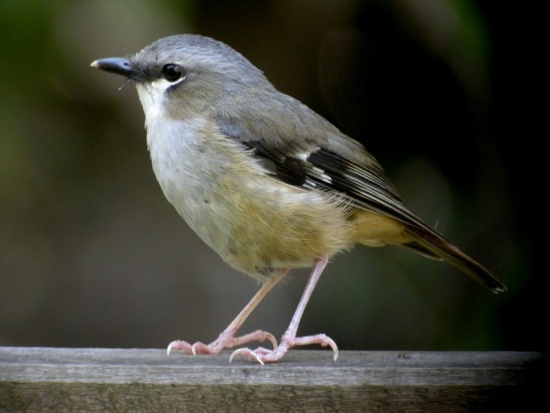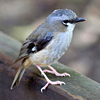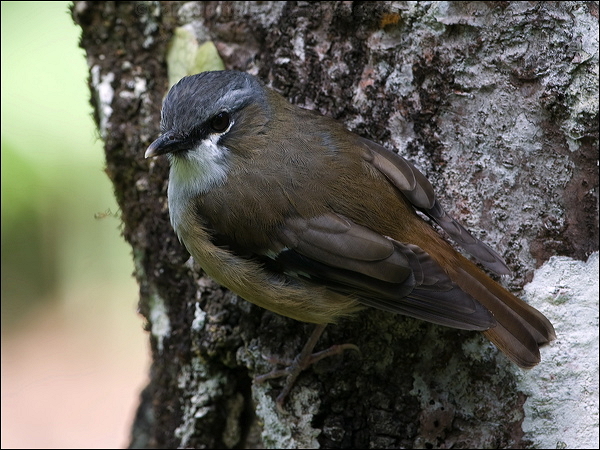
Heteromyias albispecularis
SUBFAMILY
Petroicinae
TAXONOMY
Pachycephala albispecularis Salvadori, 1876, New Guinea.
OTHER COMMON NAMES
English: Ashy robin, black-cheeked robin; French: Miro cendrй
German: Farnschnдpper; Spanish: Tordo Australiano Terrestre.
Resident
Eopsaltria australis
PHYSICAL CHARACTERISTICS
6–8 in (15–20 cm); 1.1–1.4 oz (31–40 g). Gray crown with
medium-brown upperparts, dark brown wings with whitetipped
secondary coverts, and grayish white underparts.
DISTRIBUTION
Northeastern Queensland, Australia, and mountains of New
Guinea. Three subspecies in New Guinea and a well-defined
one in Australia.
HABITAT
Rainforest, 2,500–8,000 ft (850–2,600 m) elevation in New
Guinea, 800 ft (250 m) and up in Queensland.
BEHAVIOR
Territorial and sedentary. Perches low on trunks and vertical
saplings; often jerks tail up and down. Breeding females have a
wing-flutter display. Song is a series of piping whistles, as well
as harsh alarm calls.
FEEDING ECOLOGY AND DIET
Pounces onto insects and their larvae, centipedes, earthworms,
and leeches.
REPRODUCTIVE BIOLOGY
Breeding season is from August to January. Nest is an untidy
cup, made of rootlets, tendrils, and twigs and covered with
moss on the outside; nest is placed in climbing palms or
sapling branches. Female builds nest, incubates eggs, and
broods and feeds young, but she is fed by the male. Clutch
comprised of one or two eggs, incubated for 17–19 days.
Young fledge at 12–13 days. Young fledged from 53% of nests
in one Queensland study.
CONSERVATION STATUS
Not threatened.
SIGNIFICANCE TO HUMANS
None known.
Other popular Animals
Photo Gallery of - Gray-headed robin




 Animalia Life
Animalia Life